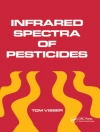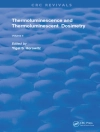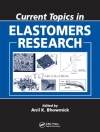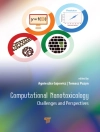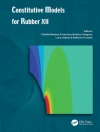Focusing on current and future uses of microbes as production organisms, this practice-oriented textbook complements traditional texts on microbiology and biotechnology.
The editors have brought together leading researchers and professionals from the entire field of industrial microbiology and together they adopt a modern approach to a well-known subject. Following a brief introduction to the technology of microbial processes, the twelve most important application areas for microbial technology are described, from crude bulk chemicals to such highly refined biomolecules as enzymes and antibodies, to the use of microbes in the leaching of minerals and for the treatment of municipal and industrial waste. In line with their application-oriented topic, the authors focus on the ‘translation’ of basic research into industrial processes and cite numerous successful examples. The result is a first-hand account of the state of the industry and the future potential for microbes in industrial processes.
Interested students of biotechnology, bioengineering, microbiology and related disciplines will find this a highly useful and much consulted companion, while instructors can use the case studies and examples to add value to their teaching.
表中的内容
Preface xvii
1 Historical Overview and Future Perspective 1
Bernhard Eikmanns, Marcella Eikmanns, and Christopher J. Paddon
1.1 Use of Fermentation Procedures Before the Discovery of Microorganisms (Neolithic Era = New Stone Age Until 1850) 1
1.2 Investigation of Microorganisms and Beginning of Industrial Microbiology (1850 Until 1940) 7
1.3 Development of New Products and Procedures: Antibiotics and Other Biomolecules (From 1940) 11
1.4 Genetic Engineering is Introduced into Industrial Microbiology (From Roughly 1980) 15
1.5 Future Perspectives: Synthetic Microbiology 18
References 20
Further Reading 21
2 Bioprocess Engineering 23
Michael R. Ladisch, Eduardo Ximenes, Nathan Mosier, Abigail S. Engelberth, Kevin Solomon, and Robert Binkley
2.1 Introduction 23
2.1.1 Role of Bioreactors 25
2.1.2 Basic Bioreactor Configurations 26
2.1.3 Types of Growth Media 27
2.2 Nonstructured Models 28
2.2.1 Nonstructured Growth Models 28
2.2.1.1 Unstructured Models 29
2.2.1.2 Biotechnical Processes 30
2.2.2 Modeling Fermentations 32
2.2.3 Metabolic Pathways 39
2.2.4 Manipulation of Metabolic Pathways 40
2.2.5 Future of Pathway Design 42
2.3 Oxygen Transport 43
2.3.1 Aerobic versus Anaerobic Conditions 43
2.3.2 kLa – Volumetric Mass Transfer Coefficient 44
2.4 Heat Generating Aerobic Processes 46
2.5 Product Recovery 49
2.5.1 Basics 49
2.5.2 In Situ Product Recovery (ISPR) 49
2.6 Modeling and Simulation of Reactor Behavior 51
2.6.1 Basic Approaches and Software 51
2.6.2 Numerical Simulation of Bioreactor Function 51
2.6.3 Contamination of Bioreactors 52
2.7 Scale-up 53
References 54
Further Reading 57
3 Food 59
Gülhan Ünlü and Barbara Nielsen
3.1 Fermented Foods 59
3.1.1 Food Preservation 59
3.1.2 Flavor and Texture 60
3.1.3 Health Benefits 60
3.1.4 Economic Impact 62
3.2 Microorganisms and Metabolism 62
3.2.1 Fermentation Processes 64
3.2.2 Starter Cultures 65
3.3 Yeast Fermentations – Industrial Application of Saccharomyces Species 65
3.3.1 Grain Fermentation for Ethanol Production – Beer 66
3.3.2 Grain Fermentation for CO2 Production – Bread 69
3.3.2.1 Yeast Preparation 69
3.3.3 Fruit Fermentation –Wines and Ciders 71
3.4 Vinegar – Incomplete Ethanol Oxidation by Acetic Acid Bacteria Such as Gluconobacter oxydans 75
3.4.1 Substrates: Wine, Cider, and Malt 75
3.4.2 Distilled (White) Vinegar 77
3.4.3 Balsamic and Other Specialty Vinegars 77
3.5 Bacterial and Mixed Fermentations – Industrial Application of Lactic Acid Bacteria, with or without Yeast or Molds 78
3.5.1 Milk – Cultured Milks – Buttermilk, Yogurt, Kefir, and Cheese 78
3.5.1.1 Bacteriophage Contamination – Death of a Culture 81
3.5.2 Meats – Sausages, Fish Sauces, and Pastes 82
3.5.3 Vegetables – Sauerkrauts and Pickles, Olives 83
3.5.4 Grains and Legumes – Soy Sauce, Miso, Natto, and Tempeh 86
3.5.5 Cocoa and Coffee 87
3.6 Fungi as Food 88
3.6.1 Mushrooms 88
3.6.2 Single-Cell Protein – Fusarium venenatum 90
3.7 Conclusions and Outlook 91
References 92
Further Reading 92
4 Technical Alcohols and Ketones 95
Peter Dürre
4.1 Introduction 95
4.2 Ethanol Synthesis by Saccharomyces cerevisiae and Clostridium autoethanogenum 97
4.2.1 Application 97
4.2.2 Metabolic Pathways and Regulation 97
4.2.3 Production Strains 98
4.2.4 Production Processes 98
4.2.5 Ethanol – Fuel of the Future? 100
4.2.6 Alternative Substrates for Ethanol Fermentation by Cellulolytic Bacteria and Clostridium autoethanogenum 100
4.3 1, 3-Propanediol Synthesis by Escherichia coli 101
4.3.1 Application 101
4.3.2 Metabolic Pathways and Regulation 102
4.3.3 Production Strains 102
4.3.4 Production Processes 104
4.4 Butanol and Isobutanol Synthesis by Clostridia and Yeast 105
4.4.1 History of Acetone–Butanol–Ethanol (ABE) Fermentation by Clostridium acetobutylicum and C. beijerinckii 105
4.4.2 Application 106
4.4.3 Metabolic Pathways and Regulation 107
4.4.4 Production Strains 110
4.4.5 Production Processes 110
4.4.6 Product Toxicity 113
4.5 Acetone Synthesis by Solventogenic Clostridia 113
4.5.1 Application 113
4.5.2 Metabolic Pathways and Regulation 113
4.5.3 Production Strains 114
4.5.4 Production Processes 114
4.6 Outlook 115
Further Reading 115
5 Organic Acids 117
Michael Sauer and Diethard Mattanovich
5.1 Introduction 117
5.2 Citric Acid 119
5.2.1 Economic Impact and Applications 120
5.2.2 Biochemistry of Citric Acid Accumulation 120
5.2.3 Industrial Production by the Filamentous Fungus Aspergillus niger 122
5.2.4 Yarrowia lipolytica: A Yeast as an Alternative Production Platform 123
5.3 Lactic Acid 124
5.3.1 Economic Impact and Applications 124
5.3.2 Anaerobic Bacterial Metabolism Generating Lactic Acid 125
5.3.3 Lactic Acid Production by Bacteria 125
5.3.4 Lactic Acid Production by Yeasts 126
5.4 Gluconic Acid 127
5.4.1 Economic Impact and Applications 127
5.4.2 Extracellular Biotransformation of Glucose to Gluconic Acid by Aspergillus niger 128
5.4.3 Production of Gluconic Acid by Bacteria 129
5.5 Succinic Acid 129
5.5.1 Economic Impact and Applications 130
5.5.2 Pilot Plants for Anaerobic or Aerobic Microbes 130
5.6 Itaconic Acid 132
5.6.1 Economic Impact and Applications 132
5.6.2 Decarboxylation as a Driver in Itaconic Acid Accumulation 132
5.6.3 Production Process by Aspergillus terreus 132
5.6.4 Metabolic Engineering for Itaconic Acid Production 132
5.7 Downstream Options for Organic Acids 134
5.8 Perspectives 135
5.8.1 Targeting Acrylic Acid – Microbes Can Replace Chemical Process Engineering 136
5.8.2 Lignocellulose-Based Biorefineries 136
Further Reading 137
6 Amino Acids 139
Lothar Eggeling
6.1 Introduction 139
6.1.1 Importance and Areas of Application 139
6.1.2 Amino Acids in the Feed Industry 140
6.1.3 Economic Significance 141
6.2 Production of Amino Acids 142
6.2.1 Conventional Development of Production Strains 142
6.2.2 Advanced Development of Production Strains 144
6.3 l-Glutamate Synthesis by Corynebacterium glutamicum 145
6.3.1 Synthesis Pathway and Regulation 145
6.3.2 Production Process 148
6.4 l-Lysine 148
6.4.1 Synthesis Pathway and Regulation 148
6.4.2 Production Strains 150
6.4.3 Production Process 152
6.5 l-Threonine Synthesis by Escherichia coli 153
6.5.1 Synthesis Pathway and Regulation 153
6.5.2 Production Strains 154
6.5.3 Production Process 155
6.6 l-Phenylalanine 155
6.6.1 Synthesis Pathway and Regulation 155
6.6.2 Production Strains 156
6.6.3 Production Process 157
6.7 Outlook 158
Further Reading 159
7 Vitamins, Nucleotides, and Carotenoids 161
Klaus-Peter Stahmann and Hans-Peter Hohmann
7.1 Application and Economic Impact 161
7.2 l-Ascorbic Acid (Vitamin C) 163
7.2.1 Biochemical Significance, Application, and Biosynthesis 163
7.2.2 Regioselective Oxidation with Bacteria in the Production Process 164
7.3 Riboflavin (Vitamin B2) 166
7.3.1 Significance as a Precursor for Coenzymes and as a Pigment 166
7.3.2 Biosynthesis by Fungi and Bacteria 167
7.3.3 Production by Ashbya gossypii 168
7.3.4 Production by Bacillus subtilis 171
7.3.5 Downstream Processing and Environmental Compatibility 173
7.4 Cobalamin (Vitamin B12) 174
7.4.1 Physiological Relevance 174
7.4.2 Biosynthesis 176
7.4.3 Production with Pseudomonas denitrificans 176
7.5 Purine Nucleotides 178
7.5.1 Impact as Flavor Enhancer 178
7.5.2 Development of Production Strains 178
7.5.3 Production of Inosine or Guanosine with Subsequent Phosphorylation 179
7.6 β-Carotene 180
7.6.1 Physiological Impact and Application 180
7.6.2 Production with Blakeslea trispora 181
7.7 Perspectives 181
Further Reading 183
8 Antibiotics and Pharmacologically Active Compounds 185
Lei Fang, Guojian Zhang, and Blaine A. Pfeifer
8.1 Microbial Substances Active Against Infectious Disease Agents or Affecting Human Cells 185
8.1.1 Distribution and Impacts 185
8.1.2 Diversity of Antibiotics Produced by Bacteria and Fungi 189
8.2 β-Lactams 190
8.2.1 History, Effect, and Application 190
8.2.2 β-Lactam Biosynthesis 190
8.2.3 Penicillin Production by Penicillium chrysogenum 193
8.2.4 Cephalosporin Production by Acremonium chrysogenum 193
8.3 Lipopeptides 193
8.3.1 History, Effect, and Application 193
8.3.2 Lipopeptide Biosynthesis 194
8.3.3 Daptomycin Production by Streptomyces roseosporus 194
8.3.4 Cyclosporine Production by Tolypocladium inflatum 194
8.4 Macrolides 197
8.4.1 History, Effect, and Application 197
8.4.2 Macrolide Biosynthesis 197
8.4.3 Erythromycin Production by Saccharopolyspora erythraea 197
8.5 Tetracyclines 200
8.5.1 History, Effect, and Application 200
8.5.2 Tetracycline Biosynthesis 200
8.5.3 Tetracycline Production by Streptomyces rimosus 201
8.6 Aminoglycosides 201
8.6.1 History, Effect, and Application 201
8.6.2 Aminoglycoside Biosynthesis 201
8.6.3 Tobramycin Production by Streptomyces tenebrarius 203
8.7 Claviceps Alkaloids 203
8.7.1 History, Effect, and Application 203
8.7.2 Alkaloid Biosynthesis 203
8.7.3 Ergotamine Production by Claviceps purpurea 203
8.8 Perspectives 203
8.8.1 Antibiotic Resistance 203
8.8.2 New Research Model for Compound Identification 206
8.8.3 Future Opportunities 207
Further Reading 211
9 Pharmaceutical Proteins 213
Heinrich Decker, Susanne Dilsen, and Jan Weber
9.1 History, Main Areas of Application, and Economic Importance 213
9.2 Industrial Expression Systems, Cultivation and Protein Isolation, and Legal Framework 215
9.2.1 Development of Production Strains 215
9.2.2 Isolation of Pharmaceutical Proteins 221
9.2.3 Regulatory Requirements for the Production of Pharmaceutical Proteins 222
9.3 Insulins 223
9.3.1 Application and Structures 223
9.3.2 Manufacturing Processes by Escherichia coli and Saccharomyces cerevisiae 225
9.3.2.1 Production of a Fusion Protein in E. coli 226
9.3.2.2 Production of a Precursor Protein, the So-Called Mini Proinsulin with the Host Strain S. cerevisiae 228
9.4 Somatropin 230
9.4.1 Application 230
9.4.2 Manufacturing Process 231
9.5 Interferons – Application and Manufacturing 232
9.6 Human Granulocyte Colony-Stimulating Factor 234
9.6.1 Application 234
9.6.2 Manufacturing Process 235
9.7 Vaccines 235
9.7.1 Application 235
9.7.2 Manufacturing Procedure Using the Example of GardasilTM 236
9.7.3 Manufacturing Process Based on the Example of a Hepatitis B Vaccine 237
9.8 Antibody Fragments 238
9.9 Enzymes 239
9.10 Peptides 240
9.11 View – Future Economic Importance 240
Further Reading 242
10 Enzymes 243
David B.Wilson, Maxim Kostylev, Karl-Heinz Maurer, Marina Schramm, Wolfgang Kronemeyer, and Klaus-Peter Stahmann
10.1 Fields of Application and Economic Impacts 243
10.1.1 Enzymes are Biocatalysts 243
10.1.2 Advantages and Limitations of Using Enzymatic Versus Chemical Methods 244
10.1.3 Brief History of Enzyme Used for the Industrial Production of Valuable Products 245
10.1.4 Diverse Ways That Enzymes are Used in Industry 246
10.2 Enzyme Discovery and Improvement 250
10.2.1 Screening for New Enzymes and Optimization of Enzymes by Protein Engineering 250
10.2.2 Classical Development of Production Strains 251
10.2.3 Genetic Engineering of Producer Strains 253
10.3 Production Process for Bacterial or Fungal Enzymes 255
10.4 Polysaccharide-Hydrolyzing Enzymes 255
10.4.1 Starch-Cleaving Enzymes Produced by Bacillus and Aspergillus Species 257
10.4.2 Cellulose-Cleaving Enzymes: A Domain of Trichoderma reesei 259
10.4.3 Production Strains 261
10.5 Enzymes Used as Cleaning Agents 263
10.5.1 Subtilisin-Like Protease 264
10.5.2 Bacillus sp. Production Strains and Production Process 265
10.6 Feed Supplements – Phytases 266
10.6.1 Fields of Applications of Phytase 267
10.6.2 Phytase in the Animals Intestine 267
10.6.3 Production of a Bacterial Phytase in Aspergillus niger 269
10.7 Enzymes for Chemical and Pharmaceutical Industry 271
10.7.1 Examples for Enzymatic Chemical Production 271
10.7.2 Production of (S)-Profens by Fungal Lipase 271
10.8 Enzymes as Highly Selective Tools for Research and Diagnostics 272
10.8.1 Microbial Enzymes for Analysis and Engineering of Nucleic Acids 272
10.8.2 Specific Enzymes for Quantitative Metabolite Assays 275
10.9 Perspectives 276
10.9.1 l-DOPA by Tyrosine Phenol Lyase 276
10.9.2 Activation of Alkanes 276
10.9.3 Enzyme Cascades 276
References 277
Further Reading 277
11 Microbial Polysaccharides 279
Volker Sieber, Jochen Schmid, and Gerd Hublik
11.1 Introduction 279
11.2 Heteropolysaccharides 282
11.2.1 Xanthan: A Product of the Bacterium Xanthomonas campestris 282
11.2.1.1 Introduction 282
11.2.1.2 Regulatory Status 282
11.2.1.3 Structure 282
11.2.1.4 Biosynthesis 284
11.2.1.5 Industrial Production of Xanthan 286
11.2.1.6 Physicochemical Properties 287
11.2.1.7 Applications 289
11.2.2 Sphingans: Polysaccharides from Sphingomonas sp. 291
11.2.3 Hyaluronic Acid: A High-Value Polysaccharide for Cosmetic Applications 293
11.2.4 Alginate: Alternatives to Plant-Based Products by Pseudomonas and Azotobacter sp. 294
11.2.5 Succinoglycan: Acidic Polysaccharide from Rhizobium sp. 294
11.3 Homopolysaccharides 295
11.3.1 α-Glucans 296
11.3.1.1 Pullulan 296
11.3.1.2 Dextran 296
11.3.2 β-Glucans 297
11.3.2.1 Linear β-glucans like cellulose and curdlan 297
11.3.2.2 Branched β-Glucans Like Scleroglucan and Schizophyllan 297
11.3.3 Fructosylpolymers like Levan 298
11.4 Perspectives 298
Further Reading 299
12 Steroids 301
Shuvendu Das and Sridhar Gopishetty
12.1 Fields of Applications and Economic Importance 301
12.2 Advantages of Biotransformations During Production of Steroids 303
12.3 Development of Production Strains and Production Processes 305
12.4 Applied Types of Biotransformation 307
12.5 Synthesis of Steroids in Organic – Aqueous Biphasic System 310
12.6 Side-chain Degradation of Phytosterols by Mycobacterium to Gain Steroid Intermediates 311
12.7 Biotransformation of Cholesterol to Gain Key Steroid Intermediates 313
12.8 11-Hydroxylation by Fungi During Synthesis of Corticosteroids 313
12.9 Δ1-Dehydrogenation by Arthrobacter for the Production of Prednisolone 316
12.10 17-Keto Reduction by Saccharomyces in Testosterone Production 317
12.11 Double-Bond Isomerization of Steroids 318
12.12 Perspectives 319
References 320
Further Reading 321
13 Bioleaching 323
Sören Bellenberg, Mario Vera Véliz, and Wolfgang Sand
13.1 Acidophilic Microorganisms Dissolve Metals from Sulfide Ores 323
13.1.1 Brief Overview on the Diversity of Acidophilic Mineral-Oxidizing Microorganisms 325
13.1.2 Natural and Man-Made Habitats of Mineral-oxidizing Microorganisms 325
13.1.3 Biological Catalysis of Metal Sulfide Oxidation 328
13.1.4 Importance of Biofilm Formation and Extracellular Polymeric Substances for Bioleaching by Acidithiobacillus ferrooxidans and Leptospirillum ferrooxidans 330
13.2 Bioleaching of Copper, Nickel, Zinc, and Cobalt 334
13.2.1 Economic Impact 334
13.2.2 Heap, Dump, or Stirred-tank Bioleaching of Copper, Nickel, Zinc, and Cobalt 337
13.3 Gold 342
13.3.1 Economic Impact 343
13.3.2 Unlocking Gold by Biooxidation of the Mineral Matrix 343
13.4 Uranium 346
13.4.1 Economic Impact 346
13.4.2 In Situ Biomining of Uranium 346
13.5 Perspectives 347
13.5.1 Urban Mining – Processing of Electronic Waste and Industrial Residues 347
13.5.2 Microbial Iron Reduction for Dissolution of Mineral Oxides 348
13.5.3 Biomining Goes Underground – In Situ Leaching as a Green Mining Technology? 348
References 351
Further Reading 351
14 Wastewater Treatment Processes 353
Claudia Gallert and Josef Winter
14.1 Introduction 354
14.1.1 Historical Development of Sewage Treatment 354
14.1.2 Resources from Wastewater Treatment 357
14.1.3 Wastewater and Storm Water Drainage 358
14.1.4 Wastewater Characterization and Processes for Effective Wastewater Treatment 358
14.1.5 Suspended or Immobilized Bacteria as Biocatalysts for Effective Sewage Treatment 360
14.2 Biological Basics of Carbon, Nitrogen, and Phosphorus Removal from Sewage 362
14.2.1 Aerobic and Anaerobic Degradation of Carbon Compounds 362
14.2.1.1 Mass and Energy Balance 366
14.2.2 Fundamentals of Nitrification 368
14.2.3 Elimination of Nitrate by Denitrification 371
14.2.4 New Nitrogen Elimination Processes 371
14.2.5 Microbial Phosphate Elimination 372
14.3 Wastewater Treatment Processes 374
14.3.1 Typical Process Sequence in Municipal Sewage Treatment Plants 374
14.3.2 Activated Sludge Process 376
14.3.3 Trickling Filters 378
14.3.4 Technical Options for Denitrification 379
14.3.5 Biological Phosphate Elimination 381
14.3.6 Sewage Sludge Treatment 382
14.3.6.1 Aerobic and Anaerobic Sewage Sludge Treatment 382
14.3.6.2 Sanitation and Quality Assurance of Sewage Sludge 384
14.4 Advanced Wastewater Treatment 384
14.4.1 Elimination of Micropollutants 385
14.4.2 Wastewater Disinfection 385
14.5 Future Perspectives 386
References 386
Further Reading 388
Index 389
关于作者
David Wilson, Ph D, was a Professor of Biochemistry, Molecular and Cell Biology at Cornell University in Ithaca (USA).
Hermann Sahm, Ph D, is Emeritus Professor of Biotechnology at the University of Dusseldorf (Germany).
Peter Stahmann, Ph D, is Professor for Technical Microbiology at the Brandenburg Technical University in Senftenberg (Germany).
Mattheos Koffas, Ph D, is Professor of Biology at Rensselaer Polytechnic Institute in Troy (USA).



